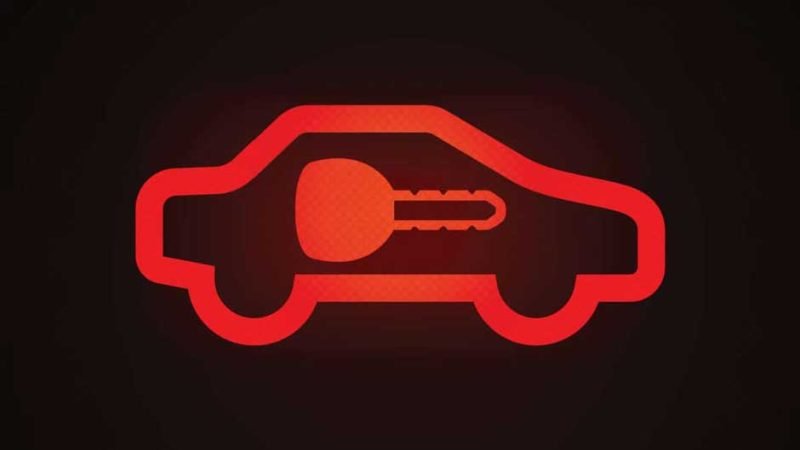
When it comes to cars, various symbols are incorporated to provide drivers with crucial information about their vehicles. While most of these symbols disappear once the car is in motion, it is important to understand their meanings as they could indicate potential issues that require attention. One such symbol is the car and lock symbol, typically depicted in red, which may raise concerns due to the association of red with danger. So, what does the car and lock symbol signify? Let’s explore its meaning in detail.
Unveiling the Meaning of the Car and Lock Symbol
The car and lock symbol serves as an indicator for the activation of the vehicle’s anti-theft system. However, it may appear as if you are locked out of your car. This symbol is a precautionary measure implemented by car manufacturers to safeguard against potential theft attempts.
Activation of the Anti-Theft System
Although the primary purpose of the anti-theft system is to prevent unauthorized entry and theft, it can sometimes be triggered even when the car’s safety is not compromised. Several factors can contribute to this activation.
- Low or Dead Battery: A low or dead battery can activate the anti-theft system. When the vehicle’s battery is running low, the key memory may be lost, triggering the anti-theft system.
Understanding the Immobilizer
Most cars manufactured after 1998 are likely to be equipped with an immobilizer. But what exactly does an immobilizer do and how does it relate to the mechanisms triggered by the car and lock symbol?
The immobilizer is a built-in security feature designed to deactivate a car’s engine if an incorrect key is used. Whenever an unauthorized key is utilized to start the car, the immobilizer immediately kicks in to prevent the vehicle from moving.
This action prompts the immobilizer symbol, represented by the car and lock, to blink repeatedly on the dashboard. The immobilizer symbol signifies a car with a lock symbol alongside it.
Even with a keyless ignition, the car and lock symbol can be activated if the key is not in close proximity or if the vehicle’s battery is low.
Working of the Immobilizer
The immobilizer functions as an electronic system that relies on signal transmission to initiate the anti-theft system when an incorrect signal is detected.
When a key is turned, specific codes embedded within the key are transmitted and matched with the corresponding codes in the vehicle. If there is a mismatch, indicating an incorrect key, the anti-theft system is triggered. This same principle applies to keyless ignition, where the receiver in the car must detect the code on the key, requiring the key to be nearby.
Possible Causes for Persistent Lights with Proximity of Key
While the key should be in close proximity for the transponder chip within it to relay the code to the vehicle’s immobilizer system, there are instances when the immobilizer system may be triggered, causing the lights to remain on even when the key is nearby.
- Low Battery: As mentioned earlier, a low battery can activate the immobilizer light on the dashboard. When a car’s battery is low, it may not recognize the key’s code, resulting in the car not starting as the code is considered foreign to the vehicle.
- Defective Key: The immobilizer system can also be triggered if the key is defective. This may not be immediately noticeable, especially with keyless ignition. A faulty chip in the key may fail to transmit the correct code to the immobilizer system, automatically triggering the anti-theft system and turning on the lights.
- Damaged Immobilizer: If the immobilizer lights persistently remain on the dashboard, it may indicate a damaged immobilizer that is not receiving the code from the transponder key.
- Damaged Car Door Lock: When the anti-theft system detects signs of forced entry into the vehicle, it takes preventive measures to ensure the car’s safety. Activating the immobilizer, turning on the lights, and preventing the engine from starting are part of these measures. This scenario often occurs when the car door lock is damaged. Although the immobilizer system is an advanced security feature, it may not distinguish between forced entry and a damaged lock, leading to the activation of the anti-theft system and the illumination of dashboard lights.
How to Bypass the Car’s Anti-Theft System
If you find yourself in a situation where the anti-theft system is causing inconvenience, there are a few methods you can try to bypass it:
- Boost the Battery: If a low battery is the cause of the illuminated lights, providing a boost to your car’s battery can potentially grant you full access to your vehicle. Similarly, if the key’s battery is the culprit, simply replacing it should resolve the issue.
- Replace the Key: In the case of a faulty key, replacing it is a viable solution to bypass the anti-theft system. However, this may involve some inconvenience, particularly if you are in a hurry. Regularly inspecting the condition of your key can help you avoid such situations.
- Repair the Immobilizer: If the immobilizer lights persist despite the key being in close proximity, it is advisable to have your immobilizer inspected and repaired by a professional mechanic. Similarly, a damaged car door lock should be addressed promptly to restore the proper functioning of the anti-theft system.
Conclusion
Most modern vehicles incorporate an immobilizer system to enhance security. Understanding the significance of the car and lock symbol is essential for car owners. Several factors, such as a low battery, defective key, damaged immobilizer, or compromised car door lock, can trigger the activation of the anti-theft system and cause the symbol to appear on the dashboard. By familiarizing yourself with these possibilities and knowing how to bypass the system when necessary, you can effectively manage any issues related to the car and lock symbol, ensuring a smooth and secure driving experience.

